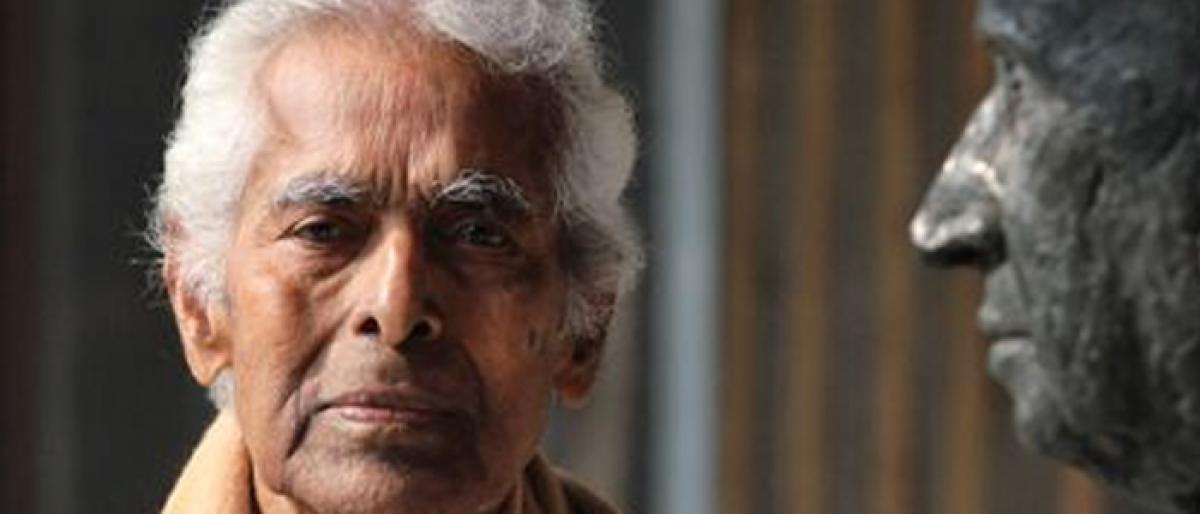Live
- Manoj Kumar Designs Scalable Data Warehouse with BigQuery and Cloud Solutions
- Krishna Janmashtami 2025: Date, Rituals, Dahi Handi, and Significance
- Guru Gobind Singh Jayanti 2025: 10 Inspiring Quotes to Celebrate His Birth Anniversary
- Border Gateway Protocol's Role in Internet Redundancy: Comparing Routing Performance and Optimizing Multi-Homed Networks
- Guru Gobind Singh Jayanti 2025: Inspiring Wishes, Messages, and Quotes to Share on This Auspicious Day
- Celebrate Epiphany Day 2025: Wishes, Messages, Images, and Quotes to Share
- Applying DevOps and Cloud Engineering to Big Data, Web, and Media: A Versatile Approach by Venkata Soma
- Tragic Accident After Game Changer Pre-Release Event: Two Ram Charan Fans Die
- World Day of War Orphans 2025: History, Significance, and Heartfelt Quotes
- itel launches A80 – An Awesome All in One Smartphone with 120 Hz Refresh Rate and IP 54 Dust & Splash Proof Rating
Just In

I was deeply saddened by the news of Padma Shri Krishna Reddys demise He is a name to reckon with in the world of Art and Printmaking in particular He was 94 The truly worldclass experimental artist was born in 1925 Son of a temple sculptor, he hailed from Nanadanoor village, Chittoor in Andhra Pradesh
I was deeply saddened by the news of Padma Shri Krishna Reddy’s demise. He is a name to reckon with in the world of Art and Printmaking in particular. He was 94. The truly world-class experimental artist was born in 1925. Son of a temple sculptor, he hailed from Nanadanoor village, Chittoor in Andhra Pradesh. After a brief participation in the Quit India movement, he left to study fine arts at Santiniketan and later on went to Europe with the support of his close friend and philosopher, Jiddu Krishnamurti.
He spent his formative years travelling to Paris, London, France, Rome and Milan; studying sculpture and working with great artists like Henry Moore, Brancusi and Giacometi. His introduction to Stanley William Hayter, a renowned printmaker and founder of the eminent print studio, Atelier 17 in Paris changed his life forever.
It is at this studio that Krishna Reddy put his sculptural skills to carve zinc plates for intaglio prints and created the colour viscosity method - a process that was to revolutionize intaglio printing and ensure his place in the history of graphic arts. Krishna Reddy, in due course became the co-director of Atelier 17. Afterwards he moved to New York in the 70s. Since 1977, he served as a professor and director at the department of graphic arts, and later worked as artist- in -residence at the New York University.
However, more recently Reddy’s experimental forte led him to developing another new process in Printmaking, which could be called ‘broken colour’ or ‘pointillist colour’ process. By mixing techniques of aquatint, mezzotint, photo engraving and deep biting simultaneous, his prints have proved that one could relatively use simple technical means and limited colours to bring out greater intensity and effect.
For this achievement, Krishna Reddy was bestowed the highest honour - the Printmaker Emeritus Award in 2000 by the Southern Graphics Council of America. Although Reddy was away from his home country, he regularly maintained close connection with art institutions and students by conducting workshops and teaching in depth about the viscosity technique.
His retrospective show ‘The Workshop Model’ carried his drawings and prints across art colleges in India, thus making them accessible to otherwise inaccessible moments of art history. I had the privilege of attending the show at New Delhi in 2012. He also mentored several students at his studio.
Krishna Reddy’s prints reverberate the fascinating energy that is intrinsic to organic forms. Although he was attracted to the figurative art that was in vogue during his peak time, he chose simplistic abstraction that he remarked as geometry.
“Geometry,” he said, “is the clay with which I build my pot”. Each of his forms is hence both materialistic and spiritual, the forms are brought to their basic but the thought they can generate are spiritual. In his works, one finds the intrinsic connection to the Indian philosophy which was evidently imbibed from his association with thinker, Jiddu Krishnamurti. With his daughter, Aparna’s arrival, human and animal forms returned to appear in his prints and sculptures, which hold an uncanny influence of Giocometti’s sculptures.
Reddy’s lifelong partner, Judy Blum Reddy is a well-established artist herself. Post-World War II in Europe and the events of 1968 in Paris became a turning point that defined their role in social practice and commitment to fight inequality.
Soon, she supported him in setting up a printmaking studio in New York. In recognition of his colossal contributions to contemporary Indian art, he has been honored with the "Padma Shri" by Government of India and was selected as one of the 33 internationally known artists for a portfolio of prints by the "Homage Aux Prix Nobel". He has held over fifty solo exhibitions all over the world, taken part in all major international print biennials while his prints are in museum collections. He also has several important publications on printmaking to his credit.
Although, Printmaking is an arduous medium which needs great patience and technical abilities, he will be remembered as the pioneer of printmaking in India who inspired artists such as Somnath Hore, Jyoti Bhatt, Laxma Goud and several young artists. While he has found peace on August 22, 2018 surrounded by his loved ones, Krishna Reddy will remain one of the most significant Indian artists of this millennium, as his intaglios will always exuberate the vitality and his romance with life.
Nirmala Biluka (Artist/ Researcher)

© 2024 Hyderabad Media House Limited/The Hans India. All rights reserved. Powered by hocalwire.com







